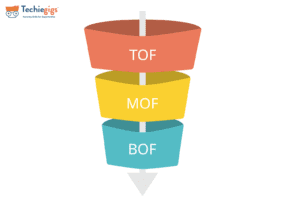Strategic SEO Keyword Prioritization: Unleashing ROI Through Bottom-of-Funnel Focus
The importance of understanding search intent and its role in SEO strategy is widely acknowledged in digital marketing. While there has been extensive discourse on search intent, particularly in terms of content creation that satisfies it, the aspect of how brands should effectively prioritize SEO keywords still needs to be addressed.
Although discussions on search intent typically encompass informational, comparative, and transactional search queries, translating this into actionable recommendations for SEO keyword prioritization has been limited. Instead of spreading your content evenly across all types of search intentions, do something different. We recommend a more strategic approach—prioritizing bottom-of-funnel (BOF) content and gradually expanding upwards.
The reason for this is based on the limited SEO resources available and the impressive return on investment (ROI) that BOF content produces compared to other intent types. This article explains our reasoning and provides real-world evidence to back it up.

Table of Content
Finite Nature of SEO Resources
The notion of creating a balanced array of content across different search intent categories assumes that companies possess infinite SEO resources. However, this assumption doesn’t hold true in reality. Every brand is confined by constraints such as the availability of writers, SEO strategists, and budget for link building. Even with the integration of AI-assisted content creation, the race to dominate SEO keyword is only sometimes won by the sheer volume of content.
In fact, factors like content quality and backlinks play pivotal roles in SEO rankings. While AI tools can expedite content creation, Google’s preference for originality and expertise necessitates human input. Moreover, backlinks, a longstanding SEO ranking factor, remain integral in differentiating websites in a landscape saturated with AI-generated content. Thus, the finite nature of SEO resources applies universally.
ROI from Bottom of Funnel SEO Keywords
To substantiate our assertion that BOF content generates significantly higher ROI than other intent types, we first emphasize the importance of tracking conversions from SEO. Surprisingly, many SEO teams focus solely on traffic growth without measuring the actual conversions driven by their efforts. The process involves defining a conversion, setting up analytics goals, and generating reports detailing conversions attributed to specific landing pages.

Our empirical data spanning over five years and multiple brands confirm a remarkable trend. BOF pages with transactional SEO keyword exhibit conversion rates ranging from 1% to 5%, while top-of-funnel (TOF) pages catering to informational queries demonstrate significantly lower rates of 0.01% to 0.5%. This stark contrast underscores the exponential difference in conversion rates between BOF and TOF keywords.
Journey Complexity and Conversion Rates
Users’ convoluted journey from initiating a TOF query to becoming customers underscores the inefficiency of targeting these SEO keywords. The stages include:
- Performing the query.
- Clicking through results.
- Reading content.
- Possibly engaging with gated resources.
- Interacting with subsequent drip emails.
- Eventually, reaching out for a purchase.
The very low conversion rates at each step culminate in an overall paltry conversion rate. Moreover, the argument that high search volume compensates for low TOF conversion rates doesn’t hold up. The difference between BOF and TOF conversion rates is so substantial that even a higher volume of TOF queries can’t bridge the gap.
Unexplored Bottom of Funnel SEO Keyword Categories
A broader understanding of Bottom of Funnel SEO keywords is necessary for brands seeking to optimize SEO ROI. Beyond the conventional “category keywords” (e.g., “SEO software”), two other high-converting categories exist: “comparison keywords” and “jobs to be done keywords.”

Comparison Keywords:
These terms indicate users comparing multiple solutions (e.g., “salesforce vs Pipedrive”). While often considered mid-funnel, our data shows that they convert as effectively as category keywords.
Jobs to Be Done Keywords:
This category pertains to users looking for solutions to specific problems (e.g., “how to do competitor keyword research”). Though these may not overtly indicate buying intent, they hold significant conversion potential, often overshadowing Top of Funnel queries.
Conclusion
Instead of spreading content evenly across different search intent levels, focusing on keywords at the bottom of the funnel is smarter. These keywords have been shown to bring in more returns on investment (ROI). When you try to lead people from the top of the funnel to make a purchase, you often end up with very low conversion rates.
To make the most out of SEO, companies should find and target different bottom-of-funnel categories, not just the usual ones. This smart alignment between what people are searching for and what you prioritize in SEO is crucial for getting the most organic search traffic.

